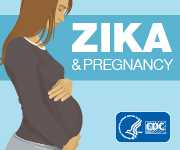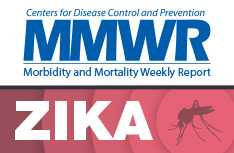Postnatal Care
Guidance for the evaluation of infants with congenital Zika virus exposure has been previously published; infants who meet one or more of the published criteria for testing for congenital Zika virus infection, should be tested and evaluated in accordance with the updated CDC interim guidance for the evaluation and management of infants with possible Zika virus infection. However, in light of the updated recommendations that will likely reduce routine Zika virus testing of asymptomatic pregnant women with recent possible Zika virus exposure but no ongoing exposure, it is critical that pediatric health care providers inquire about possible maternal and congenital Zika virus exposure for every newborn.
Infants born to mothers with possible Zika virus exposure during pregnancy who did not receive testing, including asymptomatic pregnant women with recent possible Zika virus exposure but no ongoing exposure, should have a comprehensive physical examination, including standardized measurement of head circumference, hearing screen developmental assessments as part of routine pediatric care. In addition, based on the level of possible Zika virus exposure (e.g. duration and type of exposure, use of regular protection measures, intensity of Zika transmission in the location of travel), the provider should consider whether further evaluation of the newborn is warranted for possible congenital Zika virus infection. If further evaluation is warranted, a head ultrasound, and ophthalmologic assessment should be considered. Based on results of the evaluation, testing of the infant’s specimens could be considered. This guidance also applies to infants born to mothers with negative maternal testing in the setting of an exposure that occurred more than 12 weeks earlier.
Pathologic evaluation of fetal tissue specimens (e.g., placenta and umbilical cord), is another important diagnostic tool to establish the presence of maternal or congenital Zika virus infection and can provide a definitive diagnosis of Zika virus infection in certain scenarios when Zika virus-associated birth defects are present. In addition, findings from pathologic evaluation might also be helpful in evaluating some pregnant women who seek care >12 weeks after symptom onset or possible exposure. For additional pathology testing recommendations, refer to CDC’s updated interim guidance.
More Information
- Page last reviewed: July 22, 2017
- Page last updated: July 22, 2017
- Content source:





 ShareCompartir
ShareCompartir